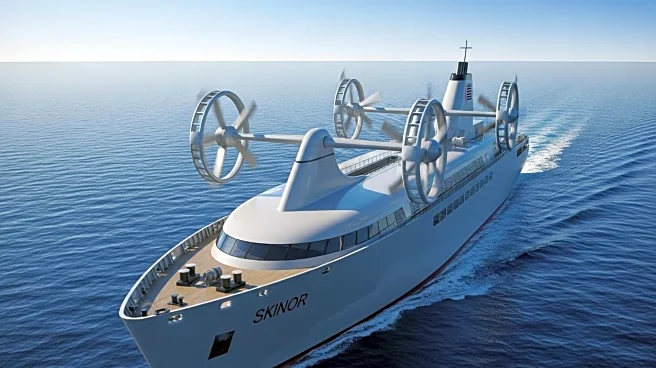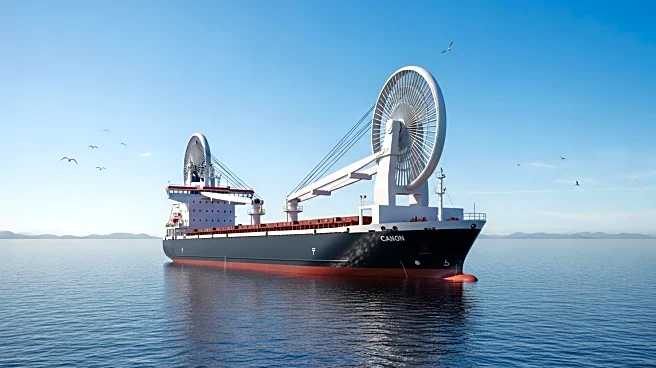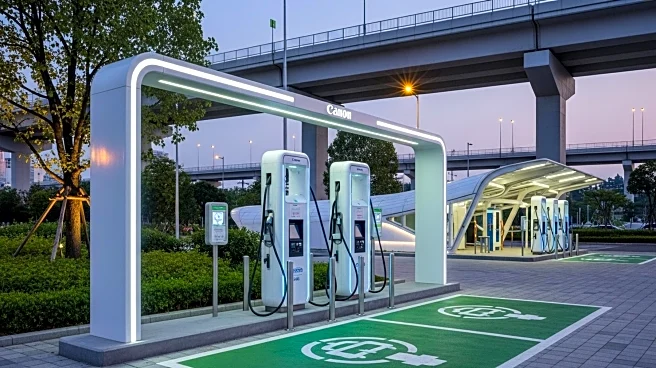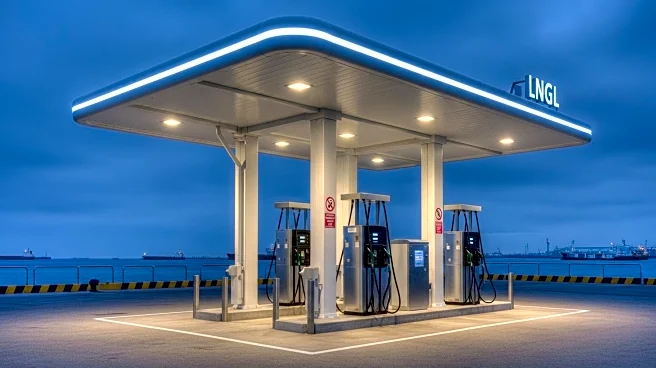What's Happening?
The century-old Flettner rotor technology, initially demonstrated in 1925, is gaining renewed interest in the maritime industry. The technology involves large rotating towers on ships that harness wind to improve fuel efficiency. Despite its initial failure due to the low cost of fossil fuels and the Great Depression, modern decarbonization targets have revived interest in this technology. Currently, Flettner rotors are installed on at least 35 commercial freight ships, offering up to 20% fuel savings and reduced greenhouse gas emissions. The rotors, now made with lighter composite materials, are more efficient than their predecessors.
Why It's Important?
The resurgence of Flettner rotor technology is significant for the maritime industry as it seeks sustainable solutions to reduce fuel consumption and environmental impact. With increasing pressure to meet decarbonization targets, this technology offers a viable method to cut operational costs and emissions. The adoption of Flettner rotors could lead to broader changes in shipping practices, promoting greener alternatives and potentially influencing regulatory standards in the industry.
What's Next?
As the maritime sector continues to prioritize sustainability, the use of Flettner rotors is likely to expand. Further advancements in materials and motor efficiency could enhance the technology's effectiveness, encouraging more shipping companies to adopt it. The industry may also see increased investment in research and development to optimize rotor designs and integrate them into various types of vessels.
Beyond the Headlines
The revival of Flettner rotors highlights the importance of innovation in addressing environmental challenges. It underscores the potential for historical technologies to be adapted to modern needs, reflecting a broader trend of seeking sustainable solutions in various industries. The technology's success could inspire similar efforts to revisit and refine other historical innovations.











